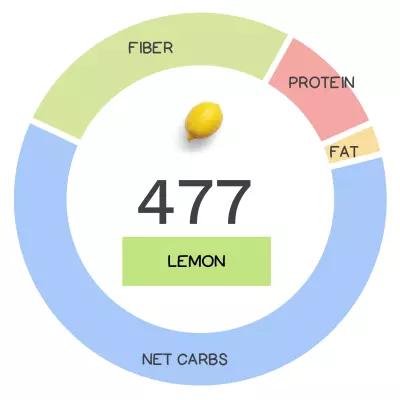
Unlike other popular citrus fruits, such as oranges, grapefruits, and tangerines, we’re not likely to sink our teeth into a juicy lemon. However, this ellipsoidal fruit is a multi-tasker extraordinaire! Not only does it add a distinctive, refreshing flavor to many foods and beverages, lemons, lemon juice and lemon peels can be used in all kinds of interesting ways – as a fish marinade, meat tenderizer, culinary garnish, to prevent oxidation in other fruits, to create invisible ink or to highlight hair, but most prominently it can be used as an effective cleaning agent (even the leaves can be used for tea and to prepare cooked meats and seafood). And that’s not all, lemons are incredibly healthful too! Talk about a superstar – you might say, this fruit is “simply the zest!” (Hyuck)
A genomic study determined that the lemon is a hybrid between bitter orange and citron, and botanically they are technically a type of berry.
Despite their popularity today, lemons were once so rare that they were given to kings as gifts! Lemons (Citrus limon) are native to Asia, where they have been cultivated for their sour fruit since ancient times. They were brought to Ancient Rome no later than the second century AD; however, they were not widely cultivated at that time. Lemons were introduced to the Americas by Spanish explorers, where they were mainly used for ornamental and medicinal purposes. Interestingly, a genomic study determined that the lemon is a hybrid between bitter orange and citron, and botanically they are technically a type of berry. The characteristic sour taste of lemon juice comes from its high citric acid content; for this reason, lemon juice was historically used as a preservative.
In 1747 lemons were used by James Lind in one of the first controlled clinical trials recorded in medicine, treating sailors for scurvy aboard the HMS Salisbury.
In 1747, James Lind performed one of the first controlled clinical trials recorded in medicine. While on board the HMS Salisbury, he treated men suffering from scurvy with various remedies including cider, sea-water, vinegar, vitriol, garlic paste and citrus fruit (2 oranges and one lemon daily). By the end of the week, sailors receiving citrus fruit felt well enough to help their counterparts, who were not so lucky! Even though vitamin C was not yet known at that time, his results helped address this serious illness. Based on his discovery, the Royal Navy made sure all sailors had lemon juice to drink when they were at sea for voyages longer than one month and as homage to his contributions, to this day a lemon tree adorns the official crest of the British Institute of Naval Medicine.
Learn What Foods to *ADD* to Your Diet
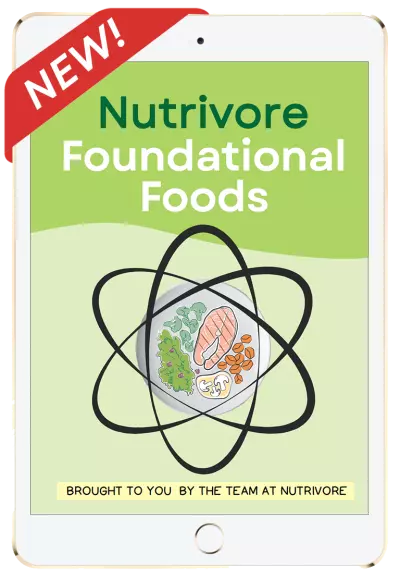
Nutrivore Foundational Foods
Learn what makes the 12 Nutrivore foundational food families nutritionally unique, their health benefits, which options are the most nutrient dense, how much of them to eat, plus various fun facts, practical pointers, and busting of common myths.
This very helpful resource will introduce you to new foods and expand your nutrition knowledge, making food choices easier!
Buy now for instant digital access.
Nutrivore Score for Lemon – 477
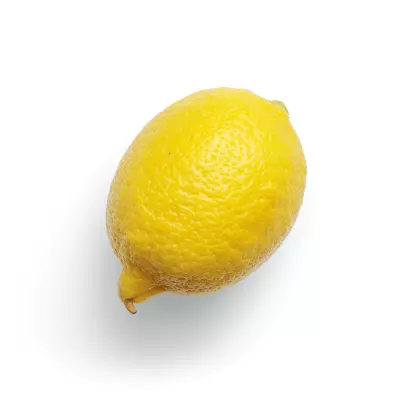
Lemon has a Nutrivore Score of 477, making it a high nutrient-dense food! Plus, it is a low-carb and low-calorie-density food; the calorie count of lemon is 61 calories per cup!
Per serving, lemon is a best source (>50% daily value) of vitamin C; an excellent source (20-50% daily value) of dietary fiber and polyphenols; and a good source (10-20% daily value) of vitamin B6 (pyridoxine).
Ditch Diets. Embrace Nutrients. Start with These 5 Free Guides.
Sign up for the free weekly Nutrivore Newsletter and get 5 high-value downloads—delivered straight to your inbox—that make healthy eating simple and sustainable.

Lemon Nutrition Facts
One serving of lemon is standardized to 1 cup, sections or about 212 grams (7.5 ounces). A typical lemon (2 3/8″ diameter) weighs 84 grams, which means: one serving of lemon is roughly equivalent to 2.5 lemons.
LEmon Nutrition Facts Per Serving
| Lemon, raw | Nutrivore Score: 477 | Nutrient Density: High |
|---|---|---|
| Serving Size: 1 cup (212 grams) | Protein: 2.3 grams | Net Carbohydrates: 13.8 grams |
| Calories: 61 | Total Fat: 0.6 grams | Dietary Fiber: 5.9 grams |
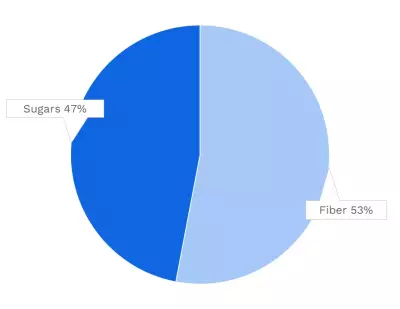

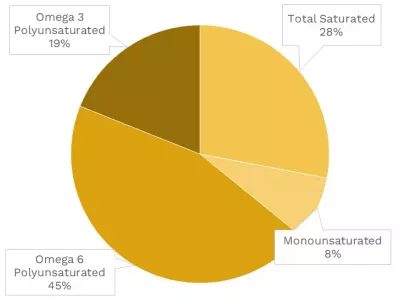
| VITAMINS | ||
|---|---|---|
| Vitamin A | 2.1 μg RAE | 0% DV |
| Vitamin B1 (Thiamin) | 84.8 μg | 7% DV |
| Vitamin B2 (Riboflavin) | 42.4 μg | 3% DV |
| Vitamin B3 (Niacin) | 0.2 mg | 1% DV |
| Vitamin B5 (Pantothenic Acid) | 0.4 mg | 8% DV |
| Vitamin B6 (Pyridoxine) | 169.6 μg | 10% DV |
| Vitamin B7 (Biotin) | 2.5 μg | 8% DV |
| Vitamin B9 (Folate) | 23.3 μg | 6% DV |
| Vitamin B12 (Cobalamin) | 0.0 μg | 0% DV |
| Vitamin C | 112.4 mg | 125% DV |
| Vitamin D (D2 + D3) | 0.0 μg | 0% DV |
| Vitamin E | 0.3 mg | 2% DV |
| Vitamin K | 0.0 μg | 0% DV |
| Choline | 10.8 mg | 2% DV |
| Myo-Inositol | 63.6 mg | ~ |
| CoQ10 | ~ | ~ |
| FUNCTIONAL FATS | ||
|---|---|---|
| MUFA | 0.0 g | 0% DV |
| ALA | 55.1 mg | 3% DV |
| EPA + DHA | 0.0 mg | 0% DV |
| CLA | ~ | ~ |
| Linoleic Acid | 0.1 g | 1% DV |
| MCT’s | 0.0 g | ~ |
| MINERALS | ||
|---|---|---|
| Calcium | 55.1 mg | 4% DV |
| Copper | 78.4 μg | 9% DV |
| Iodine | ~ | ~ |
| Iron | 1.3 mg | 7% DV |
| Magnesium | 17.0 mg | 4% DV |
| Manganese | 63.6 μg | 3% DV |
| Phosphorus | 33.9 mg | 3% DV |
| Potassium | 292.6 mg | 6% DV |
| Selenium | 0.8 μg | 2% DV |
| Sodium | 4.2 mg | 0% DV |
| Zinc | 0.1 mg | 1% DV |
| PHYTONUTRIENTS | ||
|---|---|---|
| Carotenoids | 74.2 μg | ~ |
| Polyphenols | 347.7 mg | ~ |
| Phytosterols | 38.2 mg | ~ |
| Glucosinolates | ~ | ~ |
| Thiosulfinates | ~ | ~ |
| Betalains | ~ | ~ |
| AMINO ACIDS & PEPTIDES | ||
|---|---|---|
| Taurine | ~ | ~ |
| Ergothioneine | ~ | ~ |
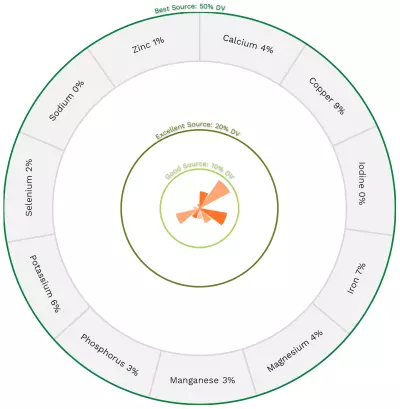
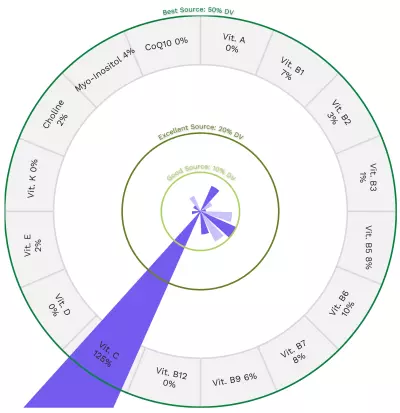
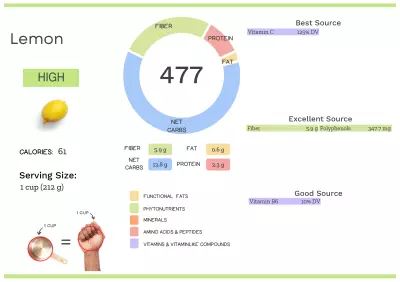
Lemon Nutrition Varies With Processing
The Nutrivore Score of lemon varies with processing, with all parts of the fruit being nutritious – including fresh lemon zest!
| NUTRIVORE SCORE | |
|---|---|
| Lemon, raw, without peel | 477 |
| Lemon juice, raw | 339 |
| Lemon peel, raw | 618 |
Do you think the nutrition in lemon is “simply the zest“? Maybe your friends will too!
Health Benefits of Lemon Nutrients
Let’s take a closer look at all of the best and excellent source of nutrients found in a 1-cup serving of lemon and see how they benefit our health.
Lemon Provides 125% DV Vitamin C
Lemon is a fantastic source of vitamin C, providing 125% of the daily value per 1-cup serving!

Vitamin C is a water-soluble vitamin that has powerful antioxidant properties (meaning it can help combat oxidative damage from free radicals and reactive oxygen species) and that serves as an enzyme cofactor (meaning it’s needed for enzymes to do their job, for example vitamin C is necessary for collagen synthesis, which is essential for bones, joints, teeth, blood vessels, skin and eyes) and playing important roles in immune system and skin health. Higher intakes of vitamin C are linked to reduced risk of heart disease, some forms of cancer, type 2 diabetes, cataracts, age-related macular degeneration, and gout. Vitamin C can also help regulate the stress response and reduce anxiety, and there’s preliminary evidence that it may also help prevent Alzheimer’s disease. Learn more about vitamin C here.
Lemon Provides 347.7 mg of Polyphenols
Lemon is an excellent source of polyphenols, providing 347.7 mg of polyphenols per 1-cup serving!
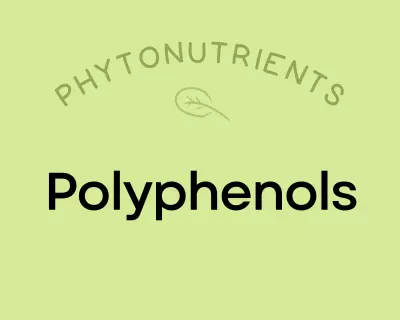
Polyphenols play a huge role in protecting against cancer, heart disease, diabetes, asthma, osteoporosis, neurodegenerative diseases, and other conditions associated with oxidative stress. In fact, a major reason foods like red wine and olive oil (as well as diets rich in both, such as the Mediterranean diet) show up as so beneficial may be due to their high polyphenol content! Along with chronic diseases, supplementing with polyphenols has been shown to protect against infections and reduce the signs of aging. Polyphenols exert their most potent effects by acting as antioxidants—preventing cellular damage by neutralizing hazardous oxygen radicals and improving cellular health as a result (which, in turn, benefits virtually every system in the body). As a result of their antioxidant properties, polyphenols also boost the immune system and protect against both chronic and acute diseases. In addition, polyphenols can help regulate enzyme function, stimulate cell receptors, modulate the functions of inflammatory cells (including T and B lymphocytes, macrophages, platelets, and natural killer cells), alter adhesion molecule expression, affect nerve cells and cardiac muscle cells, and exert antiviral effects. Learn more about polyphenols here.
Lemon Provides 5.9 g of Fiber
Lemon is also an excellent source of dietary fiber, providing 5.9 g of fiber per 1-cup serving!

Fiber serves as substrate for the trillions of microbes that inhabit our digestive tracts, collectively referred to as the gut microbiome. Through their metabolism of fiber, these resident microbes benefit us in a whole host of ways, including aiding digestion, vitamin production, detoxification, regulation of cholesterol metabolism, providing resistance to pathogens, immune regulation, neurotransmitter regulation, regulation of gene expression, and more! In fact, every human cell is impacted by the activities of our gut microbes. A healthy gut microbial community is essential for our health. And, the converse is also true: An aberrant gut microbiome has been linked to conditions as wide-ranging as cancer, obesity, diabetes, cardiovascular disease, anxiety, depression, neurodegenerative diseases, autism, autoimmune disease, ulcers, IBD, liver disease, gout, PCOS, osteoporosis, systemic infections, allergies, asthma, and more!
Fiber has other benefits, like regulating peristalsis of the intestines (the rhythmic motion of muscles around the intestines that pushes food through the digestive tract), stimulating the release of the suppression of the hunger hormone ghrelin (so we feel more full), and slowing the absorption of simple sugars into the bloodstream to regulate blood sugar levels and avoid the excess production of insulin. Fiber also binds to various substances in the digestive tract (like hormones, bile salts, cholesterol, and toxins) and, depending on the type of fiber, can facilitate either elimination or reabsorption (for the purpose of recycling, which is an important normal function for many substances like bile salts and cholesterol), both of which can be extremely beneficial—if not essential—for human health.
The recommended dietary intake for fiber is 14 grams per 1000 kcal, which translates to 28 grams of fiber, if you eat a 2,000 calorie per day diet. However, there are many studies showing greater benefits from even higher levels of intake. Lear more about fiber here.
Want to know the top 500 most nutrient-dense foods?

Top 500 Nutrivore Foods
The Top 500 Nutrivore Foods e-book is an amazing reference deck of the top 500 most nutrient-dense foods according to their Nutrivore Score. Think of it as the go-to resource for a super-nerd, to learn more and better understand which foods stand out, and why!
If you are looking for a quick-reference guide to help enhance your diet with nutrients, and dive into the details of your favorite foods, this book is your one-stop-shop!
Buy now for instant digital access.
How Much Lemon Should We Eat Per Day?
Not only are citrus fruits juicy and fragrant, their low energy density and high micronutrient and phytonutrient content means regularly including them in our diet also helps to support our overall health!
Eating two or three servings of fruit per day is optimal from a health perspective. A 2017 systemic review and meta-analysis looked at how all-cause mortality was impacted by varying intakes of 12 different food groups: whole grains and cereals, refined grains and cereals, vegetables, fruits, nuts, legumes, eggs, dairy products, fish, red meat, processed meat, and sugar-sweetened beverages. This analysis revealed non-linear relationships between how much of a particular food group we eat and how it impacts our health. While the results revealed no upper limit to the benefits of vegetable intake, the sweet spot for fruit intake was 300 grams daily. Intakes of fruit over 400 grams per day were not as beneficial as 300 grams, but the good news is that even intakes of 600 grams of fruits per day was superior to no fruit at all! This sweet spot for fruit intake translates to 2 to 3 servings of fruit daily.
And a 2018 review similarly concluded that two to three servings of fruit daily was optimal for reducing risk of cardiovascular disease, type 2 diabetes, obesity, chronic obstructive pulmonary disease, chronic constipation, and inflammatory bowel disease.
Fruit makes a convenient snack, a healthy dessert, a whimsical addition to salads, and a sophisticated flavoring agent in the form of salsas, jams, and chutneys. A serving is standardized to 1 cup chopped for raw vegetables and fruits (typically translates to 1/2 cup to 2/3 cup once cooked). Learn more in Importance of Vegetables and Fruit
Eating lemons and other citrus at least a few times per week is a great goal for overall health! Studies have shown that eating 2 or 3 servings of citrus fruits per week reduces all-cause mortality by 8% compared to eating no citrus.
It’s always best to mix up the fruit and veggies you eat day to day (aiming for a wide variety of different vegetables and fruits throughout the week), and lemons definitely have a place at the table.
Easily track your servings of Nutrivore Foundational Foods!

The Nutrivore Weekly Serving Matrix
The Nutrivore Weekly Serving Matrix digital resource is an easy-to-use and flexible weekly checklist designed to help you maximize nutrient-density and meet serving suggestions of Nutrivore foundational foods, all without having to weigh or measure your foods!
Includes a 22-page instructional guide and downloadable interactive guides.
Buy now for instant digital access.
cITATIONS
Expand to see all scientific references for this article.
Clements RS Jr, Darnell B. Myo-inositol content of common foods: development of a high-myo-inositol diet. Am J Clin Nutr. 1980 Sep;33(9):1954-67. doi: 10.1093/ajcn/33.9.1954. PMID: 7416064.
Fineli Finnish Food Composition Database: Lemon, without skin
Gorinstein S, Martin-Belloso O, Park YS, Haruenkit R, Lojek A, Ciz M, Caspi A, Libman I, Trakhtenberg S. Comparison of some biochemical characteristics of different citrus fruits. Food Chemistry. 2001. Vol 74: 309-315. doi: 10.1016/S0308-8146(01)00157-1
USDA Food Central Database: Lemons, raw, without peel
Watanabe T, Kioka M, Fukushima A, Morimoto M, Sawamura H. Biotin content table of select foods and biotin intake in Japanese. Int J Anal Bio-Sci. 2014. Vol 2(4):109-125.


